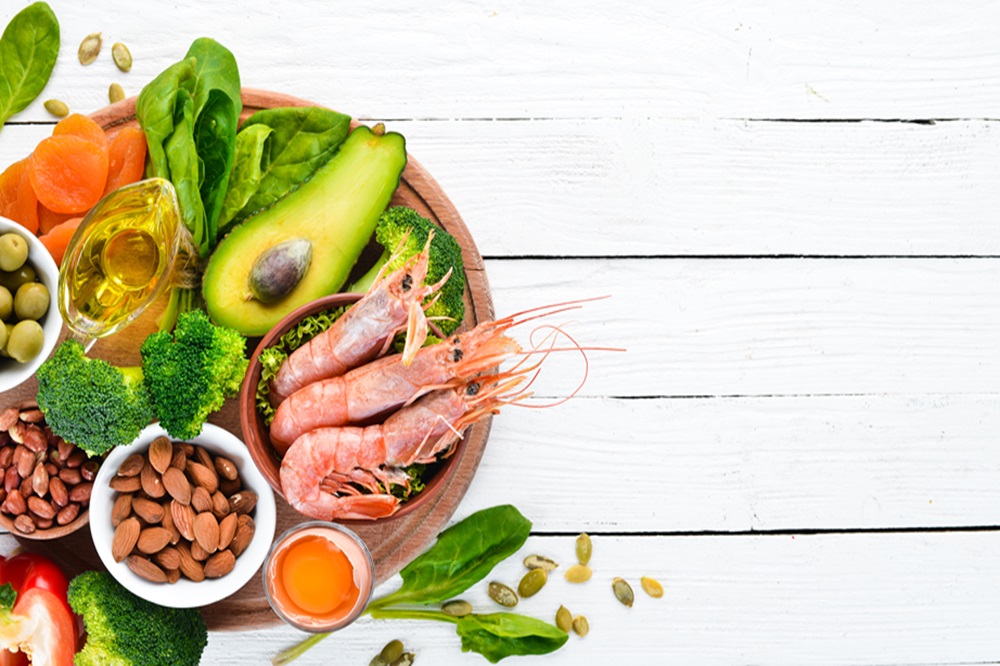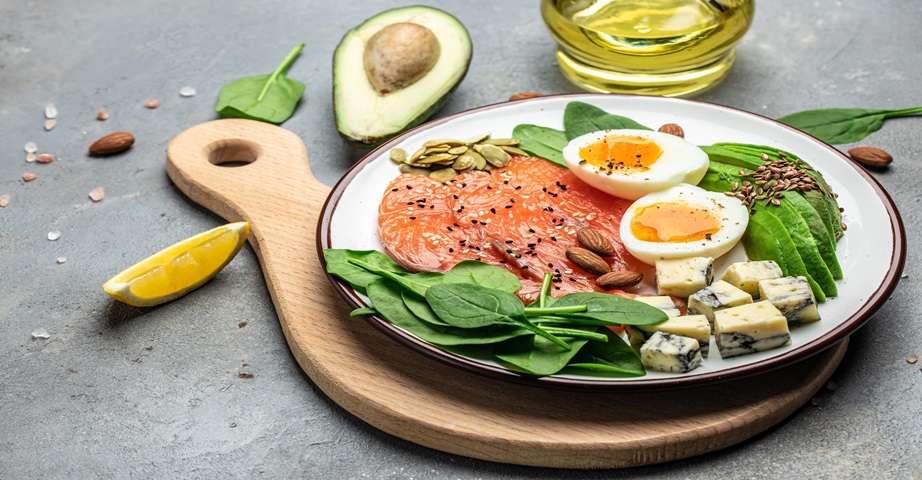Atkins diet - principles, phases and effects of a low-carb weight loss diet

The Atkins diet is a controversial slimming diet, enjoying great interest among people struggling with excessive body weight. It is a low-carbohydrate model of nutrition, taking into account four different stages, which can facilitate the loss of unnecessary kilograms. What are the principles and phases of the Atkins diet? Is it worth using it? What does a sample low-carb menu look like?
Summary
- Atkins Diet - what is it?
- Stage I - Induction phase (introduction)
- Stage II - Balance phase (alternating)
- Stage III - Maintenance phase (pre-stabilisation)
- Stage IV - Phase of preservation (final stabilisation)
- Atkins diet and ketogenic diet
- Atkins Diet - effects. Advantages and disadvantages of the Atkins diet
- Atkins Diet - nutritional plan
- Atkins Diet - opinions. Is the Atkins Diet effective?
Atkins Diet - what is it?
Atkins diet is a diet developed by the American cardiologist - Robert Atkins in the 60s of the XX century. This is a model of nutrition, which gained popularity in 1972, when a book appeared in bookstores discussing the principles of using an innovative diet - „Dr. Atkins’ Diet Revolution”.
The Atkins diet is a low-carbohydrate diet plan based on an increased supply of protein and fats along with a daily menu. It is a slimming diet that has gained great popularity around the world, promoting the reduction of excessive body weight.
Atkins Diet - principles and stages
The Atkins diet is based on limiting the carbohydrates in the daily menu. It is a nutrition model that takes into account four different phases of the diet, which have strictly defined rules and objectives.
Stage I - Induction phase (introduction)
This is the most restrictive stage, which involves a significant reduction in carbohydrate intake - during the induction phase, you can consume only 20 g of macronutrient during the day. The introductory menu is based on the consumption of meat, vegetable fats, eggs, fish, yellow cheeses or green leafy vegetables. On the other hand, fruit, cereal and starch products as well as milk or alcohol should be excluded from the menu. During the induction phase, meals should be consumed regularly, including significant amounts of liquids in the menu.
The first phase of the Atkins diet lasts a maximum of two weeks, and the purpose of its use is to introduce the body into a state of ketosis, in which the body will use fatty acids instead of carbohydrates in the process of burning energy. According to the assumptions of the author of the diet, during the introductory stage it is possible to reduce body weight by about 6 kg.
Recommended dietary supplements
Stage II - Balance phase (alternating)
During the second phase of the Atkins diet, the daily menu becomes more diverse - in the nutrition plan, in addition to products from the induction stage, you can also include some fruits that are distinguished by a low glycemic index, such as raspberries, strawberries, melon or berries, as well as more vegetables, nuts and seeds. Although it is still important to limit carbohydrates, it is allowed to gradually increase the macronutrient consumed by about 5 g per week. However, the amount of carbohydrates consumed during the alternating phase should not exceed 40 g net per day.
According to the author's assumptions, the balance stage should be used until the body weight decreases by another 2-4 kg. Assuming that you can lose 0.5 to 1.0 kg during the week, the second phase of the Atkins diet should last 2-8 weeks.
Stage III - Maintenance phase (pre-stabilisation)
The third stage of the Atkins diet is to gradually increase the carbohydrates consumed by 10 g net per week. The purpose of the maintenance phase is to determine an individual, safe level of carbohydrate consumption that will allow you to maintain a constant body weight.
During the third phase of the diet, a greater variety of daily menu is allowed - small amounts of legumes, as well as fruits or whole grain cereal products can be used in the nutrition plan. It is also important to include healthy fats and complete sources of protein in the menu, as well as avoiding processed foods and sweets.
The third phase should last until you reach a satisfactory body weight + month, to make sure that the consumed portion of carbohydrates does not contribute to the re-growth of body weight.
Stage IV - Phase of preservation (final stabilisation)
The fourth phase of the Atkins diet is not focused on weight reduction, but on stabilizing the achievements. This is the stage in which you can consume about 40-120 g of carbohydrates every day, depending on the individual needs of the body. During the preservation phase, should be taken care of a healthy and balanced lifestyle, focusing not only on the food consumed, but also on physical activity.
The final stabilisation stage is a phase that must be followed throughout life.

Atkins diet and ketogenic diet
The Atkins diet and ketogenic diet are two popular ways of eating that are considered low-carb weight loss diets. However, nutrition models differ from each other - the Atkins diet consists in significantly reducing carbohydrates and introducing the body into ketosis only in the first phase of its duration, in turn, the ketogenic diet throughout the period of use is based on low carbohydrate intake.
Moreover, the Atkins diet in the first stage focuses primarily on increased protein intake, and the ketogenic diet - on a significant supply of fats. The state of ketosis is a key element of the ketogenic diet, while during the Atkins diet it is not important.
Atkins Diet - effects. Advantages and disadvantages of the Atkins diet
The Atkins diet is a controversial model of nutrition that, like any diet, has its advantages and disadvantages. A menu created by an American cardiologist can reduce appetite and the desire to snack, as well as contribute to weight reduction and the loss of unnecessary kilograms. The Atkins diet may also be helpful in regulating blood glucose levels and improving lipid parameters, and its modified version may support drug-resistant epilepsy therapy.
Although the Atkins diet may be effective, it is not an ideal model for healthy eating. Significant reduction of carbohydrate intake and the need to eliminate from the daily menu of products such as bread, pasta, groats or initially also fruits, disturbs the nutritional balance and may contribute to the occurrence of deficiencies of valuable ingredients, among others, dietary fibre, potassium, magnesium or B vitamins. What's more, a drastic reduction in carbohydrate intake at the initial stage of the diet means that the body reduces cellular glycogen stores, and the observed weight reduction is primarily associated with the loss of significant amounts of water from the body, not body fat. A significant reduction in carbohydrates in the diet can also cause the occurrence of undesirable side effects - weakness, headaches and depressed mood, and too much protein in the menu can negatively affect the work of the kidneys. A possible deficiency of dietary fibre in the Atkins diet may result in constipation, and a high intake of fats of animal origin may increase the risk of developing civilization diseases.
Atkins Diet - nutritional plan
Proper balance of the Atkins diet is not an easy task, especially during the first stage of the diet, when carbohydrate intake should be limited to a minimum. In order to provide the body with as many valuable macro-and micronutrients as possible, you should carefully plan the menu and include appropriate dietary supplements.
During phase I, the menu may look as follows:
- Breakfast - Omelette with spinach and cheese;
- Second breakfast - Salad with kale and grilled chicken;
- Lunch - Baked fish with cooked Brussels sprouts;
- Afternoon snack - mousse with avocado;
- Dinner - Eggs stuffed with salmon.
In phase IV, when the diet can be more varied and the supply of carbohydrates slightly larger, the all-day menu can look like this:
- Breakfast - Poached egg with avocado;
- Second breakfast - Tuna salad with lettuce, tomato and celery;
- Lunch - Chicken leg baked in cheese with green bean;
- Afternoon snack - dessert from chia seeds on coconut milk with peanut butter;
- Dinner - salad with grilled shrimp and walnuts.

Atkins Diet - opinions. Is the Atkins Diet effective?
The Atkins diet, used for a short period of time, can be effective, but long-term use of the nutrition model developed by an American doctor can burden the body and negatively affect human health. After completing all phases of the Atkins diet, it is possible to increase body weight again, associated with a return to old eating habits.
Although the opinions of people using an unusual diet model are divided, nutritionists and healthy eating specialists definitely disadvice the use of restrictive diets, including the Atkins diet, suggesting, the only rational way to effectively reduce body weight is to use a healthy, balanced diet that takes into account a calorie deficit and regular physical activity.

